This post is an interview with Helena Ingram, author of children’s book, Lanie Learns to Code. Read on to learn about she has channeled her love of STEM education to empower herself and her community! This post is part of our Fall 2019 series, Girls walkSTEM.
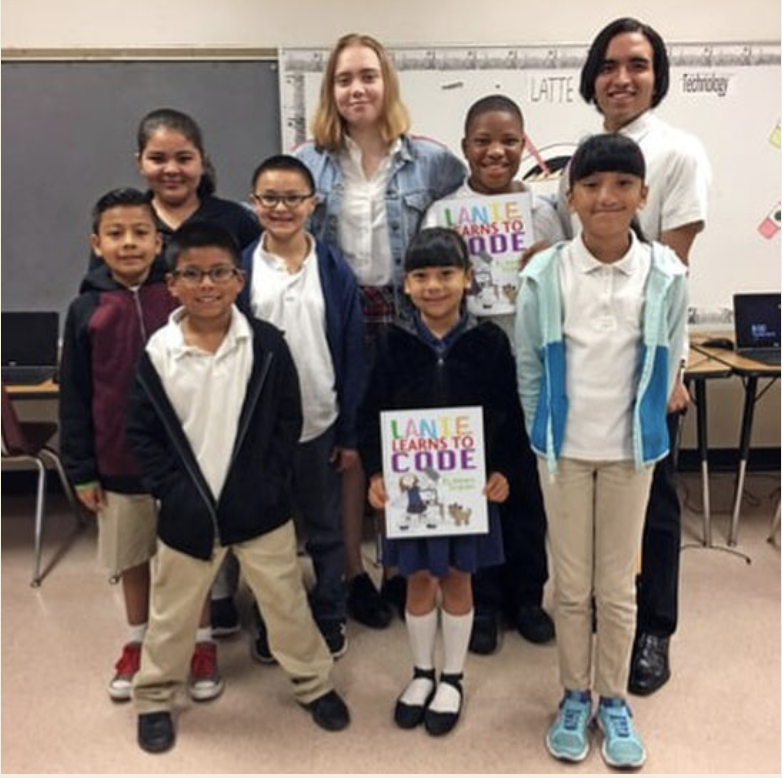

Helena Ingram is the author of Lanie Learns to Code. She was inspired to learn to code by supermodel, Karlie Kloss, creator of the highly successful Kode with Klossy program. Helena’s first coding class was through the Flatiron School, a New York coding school that Karlie collaborated with at the time, to get girls interested in coding. Helena was so inspired by the course, she knew that coding would be her future. Her new children’s book, Lanie Learns to Code, will be launching on Kickstarter very soon. You can sign up to receive updates on the book at LanieLearnstoCode.com.
She is a recent graduate of the Emma Willard School in Troy, New York and will be continuing her studies at Byte Academy. She played varsity tennis for Emma Willard and was an avid member of the philanthropy club. She is a classic car and plane enthusiast and is currently working on obtaining her pilot’s license. We interviewed Helena to learn more about her experience with STEM education in school and why she thinks it’s important for all students to develop confidence in STEM fields.
Why do you think it is important to engage youth in STEM education from a young age?
Helena: The future is all about STEM! Not only are the majority of jobs continuing to be STEM-focused, but STEM education allows us to create and do so many amazing things! STEM is the future, so are kids, so it only makes sense that we teach it to them from a young age. I started with robotic and science competitions when I was eight years old, then at fourteen, I discovered coding and started my first startup, ChumpChangeBags.com, and have loved coding ever since. It definitely was my early exposure to STEM that helped me become so passionate about it so quickly. It’s been said that when we teach kids new topics, the earlier they can learn about them, the better. By teaching and introducing kids to STEM at a young age we are maximizing their potential! Just as we try to teach kids other languages when they are young, we should do the same with STEM. Not only that but exposing them to it at a young age gives them the opportunity to explore all of the different things they can do with it and figure out which fields they like the best!
As a young woman, what successes and challenges have you experienced related to STEM education? What have you learned from your experiences?
Helena: I participated in a robotics club when I was young. I remember the coach of the club encouraging only the boys to do the actual building and programming of the robot and the girls to make the posters for the club. I was so disappointed by this, I joined the club so eager to learn how to work on robots! I knew I had to devise a way to be able to work on the robots with the boys and change this unsaid rule of the girls not being able to work on them. My other friend and I, who were the only two girls in the club, figured out that if we continuously spent a little more time with the boys working on the robot, we eventually were able to spend all of our time working on it because it became the norm to have us there. We even became the captains for some of the competitions and represented our entire club. This prepared me for many experiences later on in life. For example, a couple of years ago, I took a year off from high school, to spend some time at a tech incubator in New York City. At this incubator, I was not only one of only three girls, but I was also the youngest, with most of my peers being over thirty years old. It was intimidating at first, I was worried I would be seen differently, but I quickly realized that past experiences, like the one I had with being in robotics club, helped me be more confident and believe in myself.
What inspired you to write the book, Lanie Learns to Code?
Helena: I was inspired to write the book, Lanie Learns to Code, during my time volunteering to teach coding at Mount Auburn Elementary School. It was here that I realized that I wanted to find a way to help show kids how they can bring coding into their everyday lives, and what they’re passionate about. Whether it’s a sport a kid loves or a problem they see that needs to be fixed in their local community, coding can help with that and that’s what I really wanted to show through this book.
Based on your personal experience, is there anything you would change about the way schools currently engage students in STEM learning opportunities?
Helena: I think it is very important that schools incorporate real world experiences when teaching students how to code, so they understand how it can be used. As well as showing kids that coding isn’t just something that you just do at school, it’s applicable to many different aspects in their lives, and they can apply it to whatever they’re passionate about. I participated in the only two STEM opportunities I was offered in school. In elementary and middle school I participated in a robotics club and in high school I was in an AP Computer Science class. In both of these STEM education activities, the idea of what we could do in the real world with the skills we were learning was never discussed. In the computer science class, since I was already an avid coder and was working on outside projects, I found it disheartening that the class didn’t teach more about the amazing things we can do with coding.
For example, if a student loves something most people wouldn’t associate with coding, like clothing, there are numerous ways this student could integrate coding and fashion!
Also, introducing kids to startup culture from a young age would be great. This way, they could understand how they can turn coding into a job/company when they’re a little older and inspire them to continue with it!
What do you think it takes to have a STEM mindset? Given that technologies and job markets are changing rapidly, what type of mindset do you think is important to develop during childhood?
Helena: I think it’s important for kids to know that they can do anything that they set their minds to. Growing up my mother was always unbelievably encouraging and supportive in whatever I wanted to do. I started my first startup when I was fourteen years old using Kickstarter and she was the one who was up at midnight with me helping me package orders that needed to be shipped out the next morning. Kids need to understand that people like Elon Musk or Sheryl Sandberg are just like them. We all started somewhere and anyone could be the next Steve Jobs, it’s just about believing in yourself.
What would you say to a middle school or elementary school- aged girl who tells you, “I’m not a math person?” Or, they are not a “STEM person”? Or they love art and writing more than anything else?
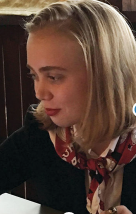
Helena: There’s a stereotype in society that someone has to be a certain type of person in order to like coding. This is such a falsehood! You can enjoy whatever you like and still be really interested in coding. A great thing about coding is that you can bring other things you like into it. Say, you like writing for example, and you want to code a site where people can share their poems. Coding is something that everyone can do and use.
I greatly disagree with the notion that someone is a certain type of person, because it then dissuades them from trying other things. I’ve always been of the mindset that you learn to love something and it is through hard work that you become good at it. I’ve had many encounters with people where I tell them I like to code and they’ll respond saying something like, “Oh I could never code, I was never good at math” or, “I don’t think I have the type of brain that would be good at that.” The idea that you have to be a math person or a science person to be good at coding is such a falsehood. I often compare coding to learning how to ride a bike.
Many people who learn, have no previous knowledge of how to do it and don’t know what it will be like or if they will like it, but the important part is that they try it. They have no idea what riding a bike is like, but they’re willing to try it, because no one ever said to them, “you have to be a math or science person” or “that you have to be naturally good at it”.
About Helena:
Helena Ingram is the author of Lanie Learns to Code. She was inspired to learn to code by supermodel, Karlie Kloss, creator of the highly successful Kode with Klossy program. Helena’s first coding class was through the Flatiron School, a New York coding school that Karlie collaborated with at the time, to get girls interested in coding. Helena was so inspired by the course, she knew that coding would be her future.Her new children’s book, Lanie Learns to Code, will be launching on Kickstarter very soon. You can sign up to receive updates on the book at LanieLearnstoCode.com.
We hope this interview with Helena inspires you as much as it inspires us!
One key goal for talkSTEM is to develop future female leaders in STEM-related careers by helping girls adopt STEM mindsets. Going on a walkSTEM tour and creating one is a great way to do this. Join the movement at https://create.talkstem.org.
We are focused on creating awesome STEM education resources to grow a STEM mindset in kids. Are you a STEM teacher or a parent looking for new STEM activities for kids? Then be the first to know when we have new content. Follow us on social media and please share videos, photos and your STEM mindset in action using #talkSTEM!
Facebook: @talkSTEM
Twitter: @talkingSTEM
Instagram: @talkingSTEM
YouTube: walkSTEM Academy
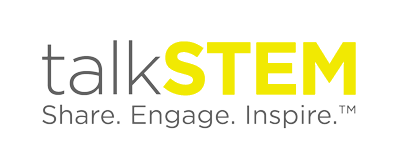
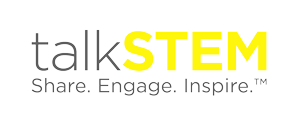
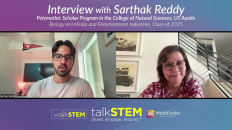
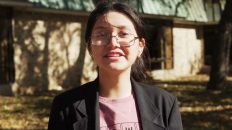



Add comment